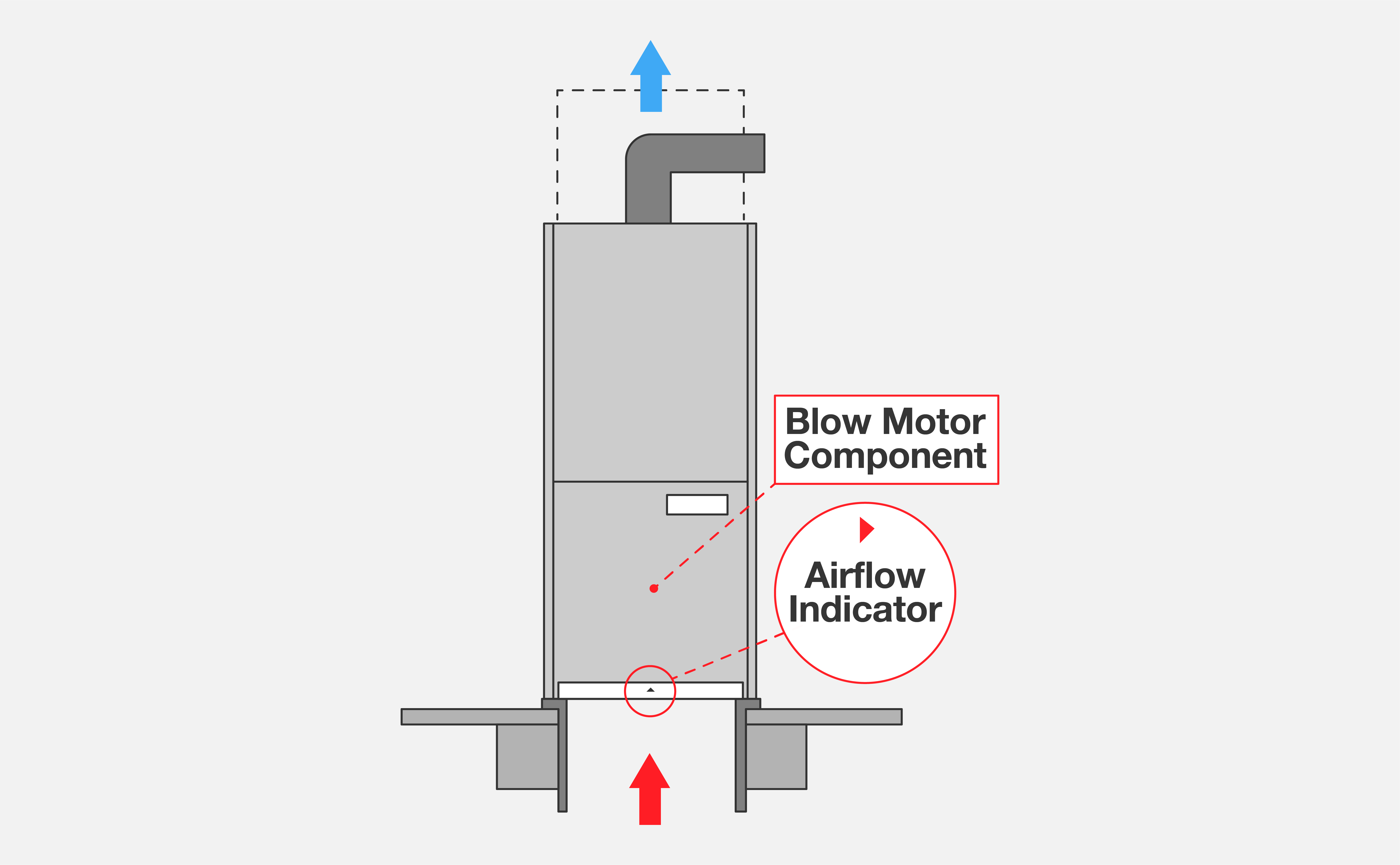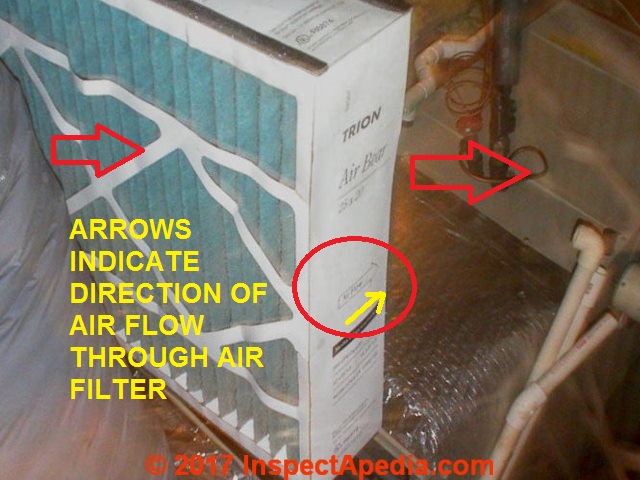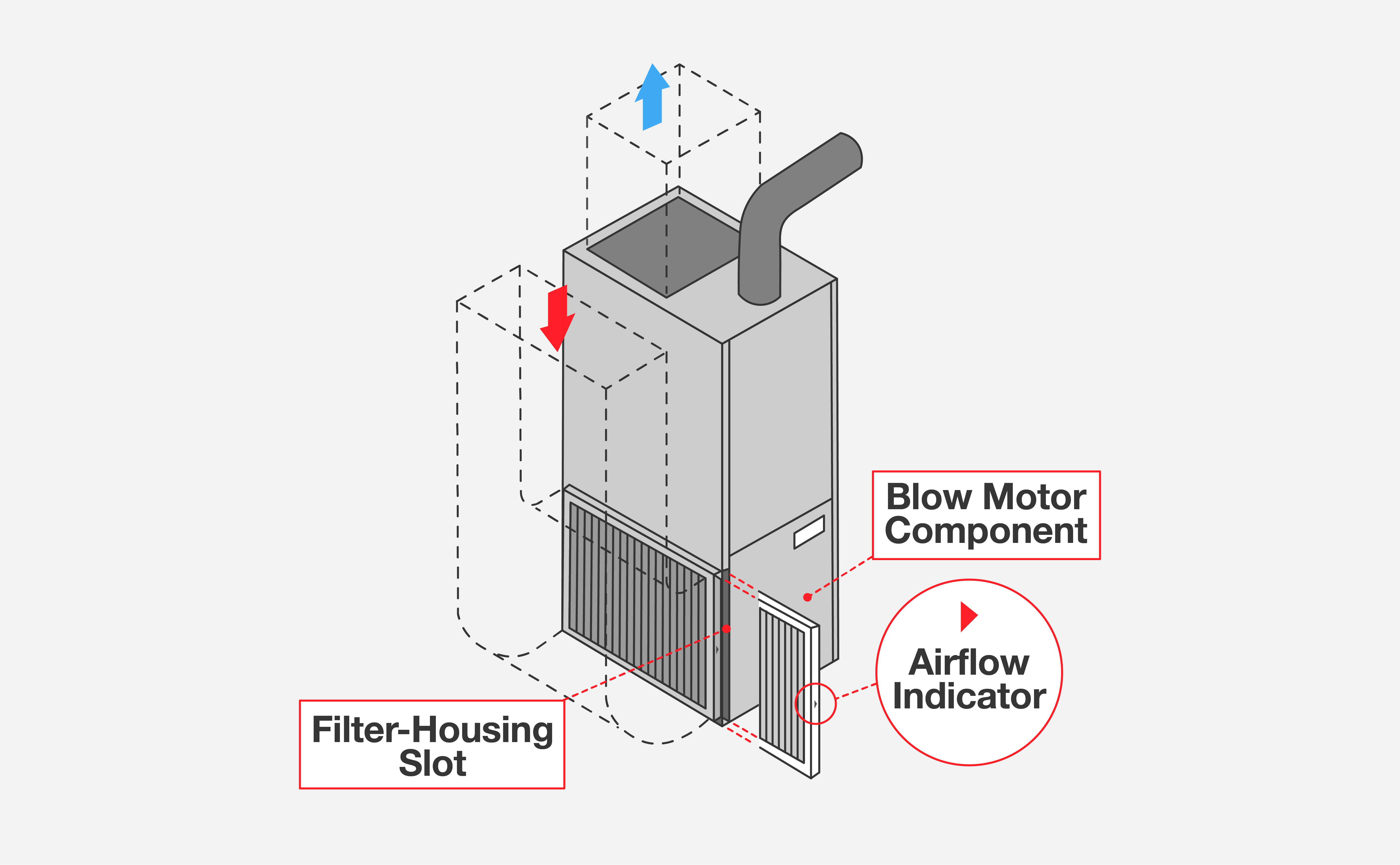Air Flow Direction Filter

Ensuring proper airflow is critical for the efficiency and lifespan of your HVAC system. One of the simplest, yet most frequently overlooked aspects of maintaining good airflow is the installation of your air filter. Putting it in backward can lead to significant problems down the line, costing you time, money, and comfort. This guide will walk you through understanding air filter direction, its importance, troubleshooting related issues, and knowing when to call a professional.
Understanding Airflow Direction and Your Filter
Your HVAC system's air filter traps dust, pollen, pet dander, and other airborne particles, preventing them from circulating throughout your home and damaging the internal components of your furnace or air conditioner. These filters are designed to capture particles as air flows *through* them in a specific direction.
The Arrow: The most important clue to look for is the arrow printed on the filter's frame. This arrow indicates the airflow direction. It tells you which way the air should be moving when it passes through the filter.
Determining Airflow Direction in Your System: Identifying the direction of airflow in your system is straightforward. The filter should be installed so that the arrow points towards the furnace or air handler, not away from it. Air is being pulled in to the unit to be heated or cooled and distributed throughout the house.
Why is Airflow Direction Important?
Installing the filter backward may seem like a minor mistake, but it can lead to a range of problems:
- Reduced Filtration Efficiency: Filters are designed with a specific layering of filter media. Installing it backward can reduce its ability to trap particles effectively, allowing more pollutants to circulate in your home.
- System Overheating: A clogged or improperly installed filter restricts airflow. This can cause your system to work harder, leading to overheating and potential damage to components like the blower motor or compressor.
- Frozen Evaporator Coil (Air Conditioners): Restricted airflow can cause the evaporator coil in your air conditioner to freeze up, severely impacting cooling performance.
- Increased Energy Bills: A struggling HVAC system consumes more energy to maintain the desired temperature, resulting in higher utility bills.
- Premature System Failure: Over time, the stress caused by restricted airflow can shorten the lifespan of your HVAC system.
Identifying and Troubleshooting Air Filter Issues
If you suspect your air filter might be causing problems, here's how to troubleshoot:
- Check the Filter's Arrow: Ensure the arrow on the filter frame is pointing in the correct direction. If not, remove the filter and reinstall it correctly.
- Inspect the Filter's Condition: A dirty filter will be visibly clogged with dust and debris. Even if installed correctly, a dirty filter restricts airflow. Replace it with a new one.
- Listen to Your System: Pay attention to any unusual noises coming from your furnace or air conditioner. Whistling or straining sounds can indicate restricted airflow.
- Check Airflow at Vents: Feel the airflow coming from your supply vents. If the airflow is weak, it could be due to a clogged filter or other airflow issues.
Common Problems Associated with Incorrect Filter Installation:
- Reduced Heating or Cooling: The system struggles to maintain the set temperature.
- Uneven Temperatures: Some rooms may be hotter or colder than others.
- Increased Run Times: The system runs for longer periods to achieve the desired temperature.
- Icing on the Air Conditioner: Visible ice formation on the outdoor unit of your air conditioner.
- Unusual Noises: Whistling, banging, or rattling sounds from the system.
DIY Air Filter Maintenance
Maintaining your air filter is a simple DIY task that can significantly improve your HVAC system's performance and lifespan. Here's a step-by-step guide:
- Gather Your Supplies:
- New air filter (correct size and type)
- Screwdriver (if needed to access the filter compartment)
- Vacuum cleaner (optional, to clean the filter compartment)
- Gloves (optional, to keep your hands clean)
- Turn Off the System: Before you begin, turn off your furnace or air conditioner at the thermostat or breaker to prevent any accidents.
- Locate the Filter Compartment: The filter is typically located in the return air duct, either near the furnace or air handler. Some systems have filters located in the wall or ceiling vents.
- Remove the Old Filter: Carefully remove the old filter, noting the direction of the airflow arrow. If the filter is very dirty, consider wearing gloves.
- Clean the Filter Compartment (Optional): Use a vacuum cleaner to remove any dust or debris from the filter compartment.
- Install the New Filter: Insert the new filter, ensuring the airflow arrow points in the correct direction.
- Replace the Filter Compartment Cover: Securely replace the filter compartment cover, using screws if necessary.
- Turn On the System: Turn your furnace or air conditioner back on at the thermostat or breaker.
- Set a Reminder: Set a reminder on your phone or calendar to replace the filter regularly (typically every 1-3 months, depending on the type of filter and air quality).
Choosing the Right Air Filter
Selecting the right air filter is also important. Filters are rated using the MERV (Minimum Efficiency Reporting Value) rating system. Higher MERV ratings indicate better filtration, but they can also restrict airflow more. Generally, a MERV rating of 8-12 is suitable for most homes.
- Fiberglass Filters: These are the least expensive and offer minimal filtration.
- Pleated Filters: These offer better filtration than fiberglass filters and are a good choice for most homes.
- HEPA Filters: These offer the highest level of filtration and are ideal for individuals with allergies or respiratory problems. However, they can significantly restrict airflow and may not be suitable for all systems.
When to Call a Professional
While replacing an air filter is a simple task, some HVAC issues require the expertise of a qualified technician. Call a professional if you experience any of the following:
- Frozen Evaporator Coil: If your air conditioner's evaporator coil is frozen, it's a sign of a serious problem that requires professional attention.
- Strange Noises: Loud banging, rattling, or grinding noises coming from your HVAC system could indicate a mechanical problem.
- Persistent Airflow Problems: If you've replaced the air filter and are still experiencing weak airflow, there may be other issues, such as ductwork leaks or a failing blower motor.
- Refrigerant Leaks: If you suspect a refrigerant leak (e.g., hissing sound, oily residue), contact a professional immediately. Refrigerant is harmful to the environment and requires special handling.
- Electrical Problems: If you notice any electrical issues, such as sparks or burning smells, turn off the system and call an electrician or HVAC technician.
Estimated Repair Costs
While providing an exact cost is impossible without a proper inspection, here are some general estimates:
- Air Filter Replacement: $10 - $50 (DIY)
- Blower Motor Replacement: $300 - $800
- Evaporator Coil Replacement: $800 - $2000
- Refrigerant Recharge: $200 - $500
- Ductwork Repair/Sealing: $200 - $1000+ (depending on the extent of the damage)
These are just estimates, and the actual cost may vary depending on your location, the complexity of the repair, and the contractor you choose. Always get multiple quotes from reputable HVAC professionals before proceeding with any repairs.
Safety Precautions
When working with your HVAC system, it's essential to take the following safety precautions:
- Turn off the Power: Always turn off the power to the system at the breaker before performing any maintenance or repairs.
- Wear Protective Gear: Wear gloves and eye protection when handling air filters, especially if they are dirty.
- Avoid Contact with Refrigerant: Refrigerant can cause frostbite. If you suspect a refrigerant leak, call a professional immediately.
- Don't Attempt Complex Repairs: If you're not comfortable working with electrical components or refrigerant lines, leave the repairs to a qualified HVAC technician.
By understanding the importance of proper airflow direction and regularly maintaining your air filter, you can keep your HVAC system running efficiently, save money on energy bills, and extend its lifespan. However, remember that some issues require professional attention. When in doubt, consult a qualified HVAC technician for assistance.










